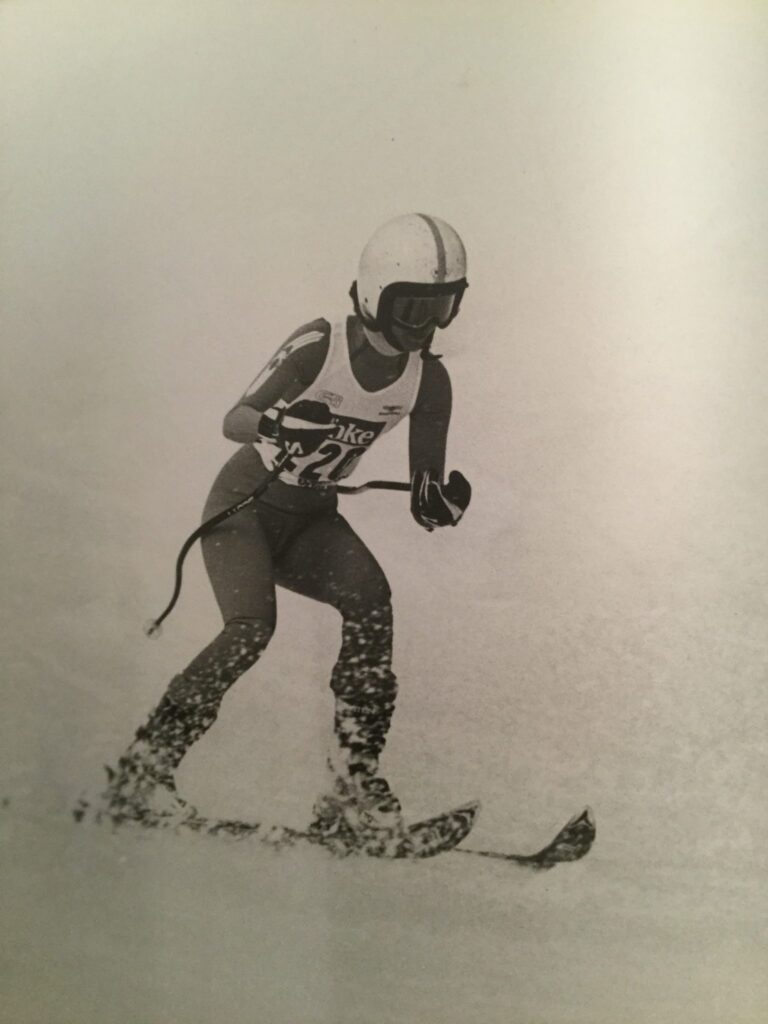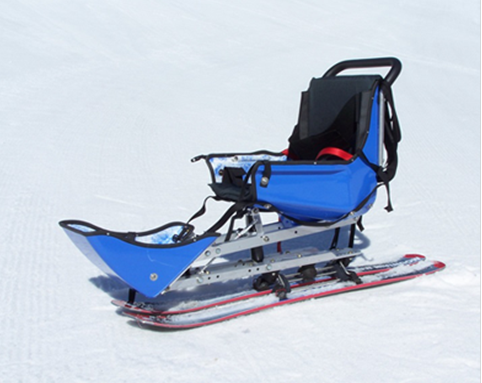
Most people are familiar with the pain of getting up to use the bathroom at night, and you can’t see anything while going down the hall. There is always a stubbed toe involved or a wall that wasn’t supposed to be there. Now replace the hall with a ski field and the lack of light for visual impairment—a frightening thought, isn’t it? Adaptive skiers are some of the most courageous in the world, competing with disabilities such as impaired muscle power and passive range of movement, limb deficiency, leg length difference, short stature, hypertonia, ataxia, athetosis, vision impairment, and intellectual impairment. How did Adaptive skiing become such a staple in the snow sports world?
After World War II, there was a spike in disabilities from injuries sustained by soldiers and civilians. Many of these unfortunate victims of the war continued to pursue their love and passion for snow by all means necessary. The development of prostheses was the main contributor to the early success of adaptive skiing. By the 1970s, adaptive ski competitions were becoming a common snow sports event, with the first world championships being held in 1974 in Grand Bornand, France.
With the development of disabled sports, the first-ever Paralympics were held in Rome in 1960, and the first-ever Winter Paralympics were held in Sweden in 1974. However, it wasn’t until 1980 that New Zealand had its first Paralympic Ski team. In 1984, in the Women’s Giant Slalom, New Zealand won its first Paralympic ski medal by Vivienne Martin. 39 years later, New Zealand has now won 35 medals in total in the Winter Paralympics. Cardrona Alpine Resort and its incredible adaptive program are the center and backbone of this success.

Cardrona has been running an adaptive program since it first opened in 1980. Cardrona employs around 30 adaptive instructors and recruits 60 volunteers to cater to the program’s demands. As a good incentive, volunteers are gifted with a free pass and other benefits for their time. Katharina Mueller is one of the top instructors and now supervisors for Cardrona’s adaptive program. Mueller has been taking the lead in the program since 2021. She explained how a lot of the program’s success comes from the volunteers’ valuable role.
“The joy we see from someone who never thought that they would be able to go skiing, being able to experience that is an accomplishment,” Mueller said. “Results and success are being measured differently, as recreational adaptive skiing is a huge part of our program, and sometimes a child being part of a group lesson thanks to our volunteers is a huge success. Our volunteers make a big difference in the adaptive program.”
Mueller went on to discuss the success of Cardrona’s program in recent years, with an increase in the number of adaptive skiers between 2019 and 2022. “We have been getting a lot of very positive feedback from our guests and their families and friends. In terms of numbers, we have seen an almost 50% increase in 2022 compared to 2019.”
With attendance in the program rising, the need for more equipment is becoming more of an issue. Mueller emphasized that as a unit, they rely heavily on donations from the public to fund the equipment allowance while working hard to raise awareness for adaptive snow ports in New Zealand.”We are working hard to raise more awareness around adaptive snow sports—in the nondisabled community as well as in the disabled community and make it accessible to more people. A huge part of our program relies on using equipment which we need to maintain and renew, therefore we heavily rely on funding and donations.”
While being at the forefront of New Zealand’s adaptive skiing, it is not a well-known fact worldwide that Cardrona operates such a successful program. George Kettlety, an adaptive coach from Great Britain, explained the quality of the new equipment he gets to test in Europe and how such equipment would positively impact Cardrona.
“Some of the prototypes I have tested use materials such as Carbon Fibre, frame aluminum and special padding gel injected sit skis which mold to the person,” Kettlety said. “Cardrona needs this kind of investment. Cardrona would benefit from more investment towards the program, their gear is a bit old and needs some upgrades. At the Veterans camp I coach at, we get to test out the new prototypes of [sit-skis]and give feedback to the creators.”
Kettlety says the development of sit skis has been incredible since he became an adaptive coach. New adaptive ski gear is a large investment. Enabling Technologies sells sit-skis at 9,900 New Zealand Dollars (5,900 U.S. dollars), while a second-hand sit-ski can cost anywhere up from 1,600 New Zealand Dollars (1,000 U.S. dollars). With the growing numbers of adaptive skiers, Cardrona has a foundation called All In, set up for donations from the public towards the adaptive program. [If you wish to donate, click here.]

The success of Cardrona’s adaptive skiing program is becoming better known offshore. Kettlety says he didn’t know Cardrona was so entwined in adaptive snow sports. “The Cardrona program is really good. They offer free training and passes for volunteers, which is a great incentive.”
Kettlety spoke about the coaching process Cardrona has established, saying that Cardrona has a great fill-out form that is an important part of the lesson.” It has to be a two-way street as these guys have very special and particular needs that must be taken into consideration, meaning the coach must be flexible,” Kettlety said.
Kettlety also said the program could expand into a freestyle or freeride adaptive program.
“I would like to see a program set up for sit skiers to be able to do the same stuff as snow sports athletes do. There is a fantastic program called HPC (High Performance Centre) at Cardrona for the freestyle and freeride athletes, I think everyone should be able to experience the same. Terrain and other conditions shouldn’t be a limit to anyone. In the UK we also have veteran charities such as Blesma and even injured police officer charities which we take out on ski weeks. It would be cool if Cardrona did something similar. This year Cardrona are making a big push towards the adaptive program which is awesome.”
Every year, the sport grows. The 1976 Winter Paralympics in Sweden had 53 competitors, and the 2022 Winter Paralympics in China boasted 564 competitors. With increasing numbers on a global scale, the need for equipment, coaches, and volunteers will multiply, helping bring a winter experience to everyone.